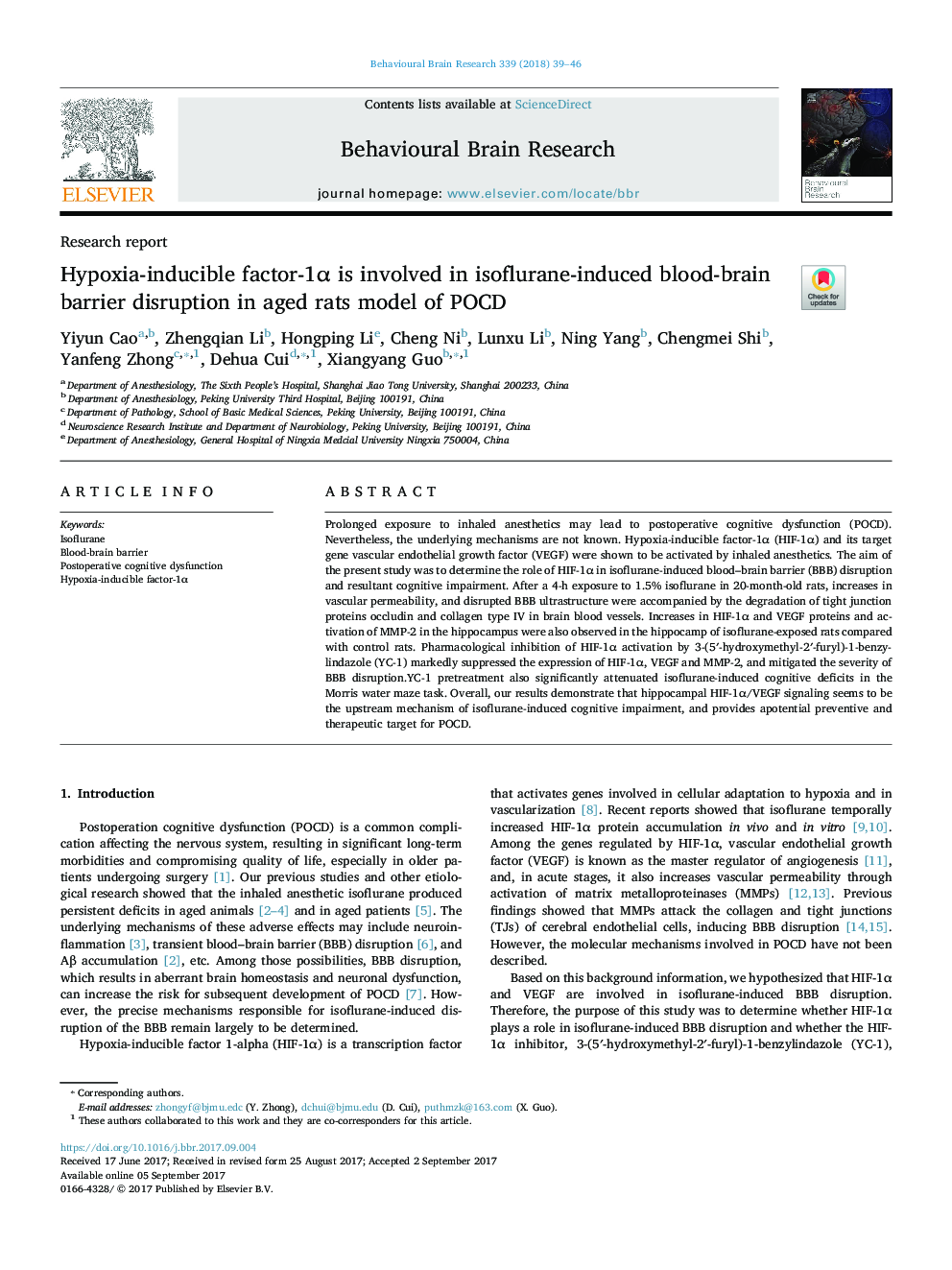| Article ID | Journal | Published Year | Pages | File Type |
|---|---|---|---|---|
| 8837959 | Behavioural Brain Research | 2018 | 8 Pages |
Abstract
Prolonged exposure to inhaled anesthetics may lead to postoperative cognitive dysfunction (POCD). Nevertheless, the underlying mechanisms are not known. Hypoxia-inducible factor-1α (HIF-1α) and its target gene vascular endothelial growth factor (VEGF) were shown to be activated by inhaled anesthetics. The aim of the present study was to determine the role of HIF-1α in isoflurane-induced blood-brain barrier (BBB) disruption and resultant cognitive impairment. After a 4-h exposure to 1.5% isoflurane in 20-month-old rats, increases in vascular permeability, and disrupted BBB ultrastructure were accompanied by the degradation of tight junction proteins occludin and collagen type IV in brain blood vessels. Increases in HIF-1α and VEGF proteins and activation of MMP-2 in the hippocampus were also observed in the hippocamp of isoflurane-exposed rats compared with control rats. Pharmacological inhibition of HIF-1α activation by 3-(5â²-hydroxymethyl-2â²-furyl)-1-benzylindazole (YC-1) markedly suppressed the expression of HIF-1α, VEGF and MMP-2, and mitigated the severity of BBB disruption.YC-1 pretreatment also significantly attenuated isoflurane-induced cognitive deficits in the Morris water maze task. Overall, our results demonstrate that hippocampal HIF-1α/VEGF signaling seems to be the upstream mechanism of isoflurane-induced cognitive impairment, and provides apotential preventive and therapeutic target for POCD.
Keywords
Related Topics
Life Sciences
Neuroscience
Behavioral Neuroscience
Authors
Yiyun Cao, Zhengqian Li, Hongping Li, Cheng Ni, Lunxu Li, Ning Yang, Chengmei Shi, Yanfeng Zhong, Dehua Cui, Xiangyang Guo,
